Sharlyn J. Lauby's Blog, page 40
April 20, 2023
3 Steps for Employees to Identify Their Own Learning Needs

Estimated reading time: 4 minutes
I’d like to believe we all know that learning aligns with performance. The more employees learn; the better they perform. But the key to making this connection successful is putting learning and development needs in the hands of the learner which, in this case, is the employee.
If organizations are brutally honest, they’ll admit that managers do not have time to tell employees everything they need to learn. Organizational structures are leaner. Technology is moving quickly. Managers have a full plate and we’re asking them to make activities like the one-on-one meeting their priority.
So, employees need to take some of the responsibility for identifying their learning needs. But before they can do that, they need some guidance. Here’s a three-step approach that employees can use to start self-identifying their learning needs. This is something that employees can do on their own, or during one-on-one meetings with their manager. It could also be explained during orientation, a training session, or in a department meeting. And it could be briefly revisited during goal setting or performance reviews.
STEP 1: Understand preferred learning styles.
There are three primary learning styles: auditory, visual, and kinesthetic.
Auditory involves listening. It could be podcasts or lectures.Visual includes pictures, graphs, or charts. PowerPoint and video fall into this category.Kinesthetic is tactile. Being able to practice or try the activity is common.If you’re looking for an activity to help employees identify their preferred learning style, look at the employee’s last performance review or annual goals. With the employee, identify five achievements in the document. Then, ask the employee to explain how they learned the knowledge or skills needed to accomplish the goal. That will give you and the employee some sense of preferred learning styles.
Be prepared to hear different types of learning. For instance, an employee might prefer to learn a new software program by working hands-on with the program (kinesthetic). But when it comes to a new procedure for completing expense reports, the employee prefers an email with steps (visual). The purpose of this step is to heighten an employee’s learning style awareness and start the conversation.
STEP 2: Determine what needs to be learned.
Now that there’s an understanding of preferred learning styles, it’s time to discuss what needs to be learned. Ask employees to look at their current goals and for each goal, identify the 10 steps it will take to accomplish each goal. Be specific in each step. Then discuss with the employee what knowledge or skills need to be learned. AND, at what level.
For example, let’s say one of an employee’s goals is to update the company policy on customer product returns. Part of the steps might include benchmarking the product return policies of the company’s competitors.
However, how much information an employee needs to understand about benchmarking could vary. If the employee will be tasked with conducting the research, then they need to know a lot about benchmarking. However, if the company is planning to hire an outside firm to do some of the research, and the employee will be overseeing the firm’s work, then they might only need to understand the process at a high-level versus at a hands-on level.
STEP 3: Develop a personal action plan.
Now it’s time to align learning with performance. Employees have an understanding of their learning style (visual, auditory, and kinesthetic). They also know how to identify the individual knowledge and skills to be learned by breaking down larger goals into smaller steps.
Employees can use the SMART acronym (specific, measurable, actionable, responsible, time-bound) to develop their personal action plans. Many organizations already use SMART in goal setting. It’s an acronym that has tremendous flexibility. Employees can learn how to use SMART in orientation or onboarding. Then they are equipped with a tool they can use throughout their career.
For an activity, ask employees to develop SMART plans for each of their goals. Managers can review the plans with the employee during one-on-one meetings and monitor their progress.
It makes good business sense for organizations to give employees the methodology and tools to manage their own learning during orientation or onboarding. Employees start their jobs with a clear understanding of their role and expectations with goal setting, one-on-one meetings, and performance management.
Meanwhile, managers can spend their time coaching employees to use the process well. Ultimately, the organization wins because managers and employees are using their resources and tools to perform at the highest level possible and accomplish their goals.
Image captured by Sharlyn Lauby while exploring the streets of Honolulu, HI
The post 3 Steps for Employees to Identify Their Own Learning Needs appeared first on hr bartender.
April 18, 2023
How to Find the Right Artificial Intelligence Tool for HR

Estimated reading time: 9 minutes
I’ve published a couple of articles lately about the need for organizations to have an artificial intelligence (AI) strategy and how AI can help organizations with employee development. It’s possible that with all the conversation about AI technologies in today’s news, organizations are talking about what AI could mean for their operation and how to get started.
So, I wanted to bring in another technology expert to talk specifically about the things that organizations need to consider when looking at AI tools. Matthew Geohring, MS, is a technology solutions consultant for global insurance brokerage Hub International’s HUB People & Technology Consulting Practice. In his role, he consults with clients on technology implementation strategies including optimization and return-on-investment (ROI). Prior to joining HUB, Matthew spent time as both a human resources generalist and an in-house senior HRIS analyst. I’m excited to be sharing his thoughts with you today.
Matthew, thanks for being here. As we know, there’s a lot of conversation about technology, specifically artificial intelligence (AI), in today’s news. For organizations thinking about jumping into the AI world, what are a couple of things that they should ask themselves to determine if they’re prepared to adopt AI?
[Geohring] Organizations need to take a step back and be sure they have a holistic view of their strategic goals, offerings, and processes. This would allow an organization to objectively assess whether there is either a true need for AI, and if a need is identified, how best to leverage the technology in support of that strategy/goal/culture/etc.
A company should not feel obligated to adopt AI only because others are saying it is neat. They may want to ask the following of their leadership.
What specific value or business opportunity does AI present that fills an existing gap in the organization?How do I expect that AI will be used in day-to-day operations to complement or enhance the current workforce?Do we have existing talent that can implement and maintain the tool, and how would we ensure the tool is being used ethically and efficiently. A human touch will still be needed.Should an organization decide to move forward, change management should be heavily considered.
Are leaders and employees ready for the enhanced technology and/or functionality?Does the organization have a creative and innovative culture, so that AI can be introduced more easily?Will AI be well received? How will you be sure employees truly understand how and why AI is being implemented/utilized?Do you foresee any resistance to changes? How will you address any potential concerns?Should an organization decide that they’re going to bring AI into the company, what’s the next step? I know that organizations need to have an Artificial Intelligence strategy, but with AI being so new, should organizations wait until they identify the tool and then then build a strategy / policy around it (which as I’m saying it doesn’t sound like a good idea).
[Geohring] AI should be viewed as a supplement and enhancement, so business strategy and organizational needs should remain as the top priority.
A solid foundation is critical to successfully implementing any new technology. AI should be viewed as one tool in the toolbox – not the epicenter of a company’s overall strategy. Once a need or value is identified, be open for ways to leverage AI as it develops and grows to meet business needs and enhance strategies or policies.
If an organization decides to work AI directly into policy and strategy, include and consider your growth-oriented goals like improving customer satisfaction, expanding in the market, or improving employee communication and engagement.
I’m sure some organizations are viewing Artificial Intelligence has a way to reduce headcount, which BTW – I’m not sure is true. At the point organizations start talking with technology companies, what should they be looking for when it comes to AI features?

[Geohring] The presence of AI is growing rapidly however jobs are largely impacted through enhancement, not replacement.
Again, the business should ask itself, what need does AI satisfy, solve for, or improve upon? For example, AI can help create a more integrated and interactive employee experience. Evaluating systems that are easy to use and understand is important. AI can be a great tool to help with that – but it’s not the only answer.
Will the tool help to perform faster data retrieval and have decision-making skills to reduce tedious tasks or human error? Is the tool easy to understand and manage? Depending on business needs, organizations will want to know if the technology they’re looking at offers AI that can perform process automation, analyze data, and/or engage with customers and employees.
What is the AI being used for? Depending on the use case, an organization will want to know where and how data or decisions are being driven through the tool. Similar to hiring an employee, you want to ensure the tool is capable of performing the tasks required of it.
Because AI can help create a more integrated employee experience, evaluating systems that are easy to use and understand is important. AI can be a great tool to help with that – but it’s not the only answer.
One of the things I’m hearing more about is Artificial Intelligence learning some bad habits – like discrimination. What kinds of questions do organizations need to ask about AI algorithms to ensure this doesn’t happen to them?
[Geohring] When evaluating AI programs, it is important to understand if the algorithms have been created with an inclusive approach and tested for fairness.
Because AI is created by humans, conscious or unconscious bias can find its way into the algorithms. It is important for employers to ask vendors for transparency about algorithms being used and how they were developed. Programmers and designers involved in the creation of the AI should be from diverse backgrounds, with diverse perspectives. After checking to understand a vendor’s inclusivity, organizations can ask if disparate impact is regularly tested and validated, with results readily available. Vendor references should also be provided, as AI should be transparent, explainable, and fair. The power of AI is increasing in step with regulations and the burden of proof for those who use it. Organizations need to ensure that it is fair and ethical.
Organizations will want AI to ‘fit in’, so it’s important to ask if the system can understand the ways the employer speaks to its employees. Can a company impose its desired culture? Will similar language be used, and can it convey the desired level of empathy and understanding? Similarly, can an outside force impose changes on this AI causing unintended/unwarranted decisions or responses?
Speaking of bad habits, when it comes to AI in organizations, should companies review and revise their ethics and privacy statements to specifically address AI, such as when it can and can’t be used?
[Geohring] AI is incredible with what it can do, so not only is it worth the effort to understand the capabilities, how it could or should be used by members of the organization, and whether that fits with a company’s objectives and culture – but companies utilizing AI have a social responsibility to protect their employees and customers. Issues around privacy, cyber, and other data-related risks must be considered. This is especially true because AI can’t yet perform a lot of tasks in the way that humans can such as understanding cause and effect or using common sense, which could leave companies vulnerable to unintended consequences of the AI’s action.
As AI continues to develop, new rules and regulations will follow as we see in other countries with restrictions being established on viewable data. The sophistication of the company’s IT and security departments will be integral, and as such, companies really need to understand how to manage the technology, the limits and risks, and where and how to use it.
Last question. There could be employees who are reluctant to interact with Artificial Intelligence. What are some things that organizations can say to help employees better understand AI and its benefits?
[Geohring] This is really about change management, a critical step to gaining buy-in at an organization. An employer can’t expect adoption without thoughtfully creating a message and campaign for all users (including your clients!). Businesses should consider their people and engagement strategies when planning to implement AI. Done well, this can be an exciting boost to a strong employee value proposition!
Be transparent with employees and explain why a specific AI was chosen. This relates back to why AI should be viewed as an enhancement to strategy, rather than the epicenter. An employee hearing ‘XYZ AI is being implemented as a chat feature to alleviate incoming calls into a call center. Giving customers access to answers at their fingertips will allow our representatives to work on more impactful issues.’ would be more likely to adopt than an employee hearing ‘XYZ AI is being implemented because it is cool, right?!’. Culturally speaking, employees want to know that their work is still valued, and businesses that convey this will help employees to feel more comfortable about the positive and exciting opportunities AI can bring.
Be just as transparent with how it was chosen and how it will be utilized. What other systems or solutions were considered? What is the downstream impact of the current issue? Who helped identify issues and provided input on the solution? How does this fit into their daily routine and tasks? Are any trainings or resources being offered to help adoption or management? Transparency with employees regarding how AI will be used and what data will be collected and used is critical. Training employees to better understand how the AI works will help to establish confidence and allow them to provide more impactful input.
Introduce your employees to the AI, show them a demo, allow them to interact with it. Offer trainings and other informative material to enhance their capabilities. Some AI tools will scan and evaluate more data in seconds than a person could in a lifetime, so that global knowledge can be communicated as an advantage, allowing employees the ability to learn things or make informed decisions in far less time than it may take to learn by other avenues. Organizations can use the tool as a skills development tool around automated processes and how they can positively impact an employee and an entire organization.

A huge thanks to Matthew for sharing his experience with us. If you’re looking for more information, be sure to check out the HUB International website. It has lots of information on technology, employee benefits, and more.
While we’ve been talking about AI for a while, we’re getting to the point where the talk is turning into reality. That’s really exciting. But we need to prepare for it. Artificial intelligence is a new tool. One of the reasons that I’ve shared three interviews with three different people recently is because it’s a great opportunity to see their perspectives. I found it very interesting to see how each interview aligns and they do. So the good news is that there are some common insights that we can use to bring AI into our lives and workplaces safely and effectively.
Image captured by Sharlyn Lauby while exploring the streets of Atlanta, GA
The post How to Find the Right Artificial Intelligence Tool for HR appeared first on hr bartender.
April 16, 2023
Non-compete Agreements Should Not Be a Retention Strategy
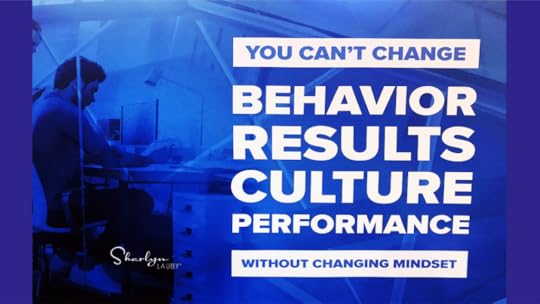
Estimated reading time: 4 minutes
The U.S. Federal Trade Commission (FTC) has recently introduced a proposal to ban non-compete agreements. It’s still in the proposal stage, so there haven’t been any final rulings, but this has huge potential for the workplace. If you’d like to read what’s in the proposal, check out the Fact Sheet on the FTC website.
I totally understand the FTC’s logic. Non-compete clauses can keep employees from pursing better job opportunities that offer better pay and/or working conditions. If you were bound by a non-compete and couldn’t take a job that paid better because of that non-compete clause…you’d say to yourself, “Yeah, down with non-competes!”.
On the other hand, the reason that organizations use non-compete agreements is because they have trade secrets and confidential information they want to protect. Often cited examples are the recipe for Coca-Cola and KFC’s 11 herbs and spices. This secret information provides an organization with a competitive advantage. So, they don’t want an employee to be able to walk out the door with it. I can totally see this side of this issue as well.
Business organizations like the U.S. Chamber of Commerce are actively vocalizing their members opposition to the FTC proposal. As a human resources professional, we will want to keep this proposal and discussion on our list of things to watch.
I recently attended a webinar hosted by the law firm of Buchanan Ingersoll & Rooney on this topic of non-compete agreements and the FTC proposal. My takeaway from the session was while we don’t know what’s ultimately going to happen with the FTC proposal, this is an opportunity for organizations to look at the agreements they have and confirm they’re being used for their intended purpose.
For example, during this one-hour webinar, the lawyer panelists talked about:
Non-compete agreements are centered around the employee not entering into competition with an employer. It usually specifies a length of time that the employee is barred from working for a competitor.
Non-disclosure agreements (NDAs), sometimes referred to as a confidentiality agreement,establish a confidential relationship. The parties to the agreement agree that the sensitive information they have access to will not be made available to others.
Non-solicitation agreements restrict an employee from recruiting either workers or customers over to a new organization. Like a non-compete agreement, a non-solicitation clause covers a specified time.
Intellectual property clauses indicate who will own any inventions, work products, etc. Typically, an employee’s work is owned by the company.
The reason I’m mentioning these different clauses / agreements is because non-compete agreements are just one type of employment related provision. And organizations will want to consult with their legal team to ensure that they don’t create a situation where (for example) they don’t have a non-compete BUT the non-disclosure and non-solicitation agreements are so restrictive that in essence they’ve created a non-compete.
Organizations also need to think about who will be subject to these agreements and why. I know some people might say, “Hey – we will just make it easy and have everyone sign everything.” But if someone doesn’t come into contact with trade secrets, do they really need to sign a confidentiality agreement? And could this put the organization’s other agreements at risk? That’s a question for your legal team.
Another thing that organizations will want to consider is how to communicate with employees about these agreements. For instance, when do employees learn that they will be asked to sign a non-compete / non-disclosure / non-solicitation agreement? How much time do they have to review it before they sign? If they have any questions, who can answer them?
Same thing applies when an employee gets transferred or promoted. Is it possible they will gain access to confidential information like financial performance or client data that would be subject to a non-compete or non-disclosure clause? And of course, when an employee leaves, is there a conversation with the exiting employee about their non-compete agreement?
One comment during the webinar that I found especially helpful was the idea of telling new employees that the company knows they are aware of trade secrets from their last employer (even if there’s no agreement) AND the company expects the employee to honor those past secrets. Because in their new role, they will be exposed to trade secrets, and they need to respect them as well.
Lastly, the webinar talked about the importance of treating trade secrets with the respect they deserve. It becomes very difficult to argue that something is a trade secret worth protecting with a non-compete, non-disclosure, and/or non-solicitation agreement when it can be accessed by anyone, anywhere, and anytime. Again, another conversation for your legal and risk management teams.
I’m not telling anyone to abandon their agreements. And I don’t know what’s going to happen with the FTC and this proposal. Organizations certainly have the right to protect their trade secrets and proprietary information. But this is one of those areas where you want to get it right. Having a dedicated conversation about why the organization uses these agreements and how to talk about them with employees can make a lot of business sense.
The post Non-compete Agreements Should Not Be a Retention Strategy appeared first on hr bartender.
April 13, 2023
There Is More to Equity Than Just Pay Equity

Estimated reading time: 2 minutes
As we hear more about COVID-19 becoming endemic, we’re also seeing more articles and conversations about lessons learned over the past few years. One of those conversations is about health equity. The Centers for Disease Control (CDC) define health equity as the state in which “every person has a fair and just opportunity to attain their highest level of health”.
There’s a great article in the Harvard Business Review titled “Employers Can Do More to Advance Health Equity”. If you’re interested in learning more about health equity, I’d suggest checking it out. The article included data about the groups of people who are marginalized by society and the health care system. Those groups include individuals who are Black, Latino, Native American, LGBTQ+, live in rural communities, live in poverty, and have a disability.
One of the other things I found insightful about the HBR article was the conversation about who is responsible for health equity – government or business? They kinda introduced it as an either / or discussion and I’m not sure the answer will be that simple. I believe the answers will include a certain level of public / private partnership.
In fact, the Society for Human Resource Management (SHRM) Foundation recently announced the Health Equity in the Workplace initiative, which is a collaboration with the American Heart Association and the Deloitte Health Equity Institute. It will be interesting to see the SHRM Foundation findings.
As human resources professionals, we’re regularly involved in discussions about employee benefits, which means we regularly talk about employee health and wellbeing. At some point, health equity is going to come up. We should be prepared for it, which is why I wanted to mention it today.
I don’t know that anyone has all the answers. Health equity is a complex topic and involves many other factors. For example, some of the reasons that we’re not seeing progress with health equity involve other inequities like to education, employment, food, social relationships, etc. But first things first. It’s time for organizations to realize that pay equity isn’t the only equity we need to be addressing.
Image captured by Sharlyn Lauby while exploring Duval Street in Key West, FL
The post There Is More to Equity Than Just Pay Equity appeared first on hr bartender.
April 11, 2023
Artificial Intelligence Can Empower Your Employees
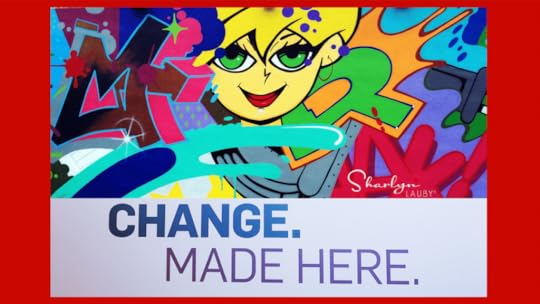
Estimated reading time: 7 minutes
A few weeks ago, I published an article about how Organizations Need an Artificial Intelligence Strategy. The conversation about artificial intelligence (AI) is growing and organizations need to think about when and how they want to use this powerful tool.
One of the most talked about ways of using AI is with our workforce. But as I just mentioned, AI is a powerful tool, and I think it’s important to understand its capabilities before just jumping out there. My friend and colleague Alexandra Levit has recently authored a book titled Deep Talent: How to transform your organization and empower your employees through AI. You might remember Alexandra from our season one podcast on career durability. One of the things I loved about “Deep Talent” was the connection to careers, so I asked Alexandra if she would share with us her thoughts on AI. Thankfully, she said yes.
Alexandra, congratulations on your new book! One of the things that I enjoyed about “Deep Talent” was the focus on AI and internal mobility. I think sometimes we forget that internal mobility is an important aspect of the recruiting function. How do you see organizations being able to use AI in the course of let’s say job postings and job bidding?

[Levit] At most organizations, internal mobility is limited to posting jobs in house (which most people don’t see) before sourcing from the outside. But especially in large organizations where matches across departmental lines are less evident, the path to a desirable internal move is unclear.
This is too bad, because people often quit for new challenges, and sometimes those people who quit might have found those challenges in the form of open jobs in their own companies! AI can solve for this easily. It breaks down a person’s profile and history into skills, suggesting how the company might redeploy those skills. It can prompt a hiring manager to think, ‘this may be the job they do well, but is there a way to put their skills to work for us elsewhere?’ If they have an open requisition, deep learning can show them if there’s a matching employee within the company – perhaps in a division the manager never thought about.
AI can break individual employee skills and experience into capabilities and encourage curious employees to view internal roles that are a match for those capabilities. Maybe the new role is appropriate now, or perhaps it’s aspirational. If the latter, deep learning can guide employees in pursuing coursework or training to prepare sufficiently for that role.
Let’s say an employee sees an internal role open in the finance department. AI can see that their skills are a good match, but they’d be a stronger match if they took a tax-related course unique to that company’s industry. That employee then knows how to move from job A to job B, and even find the right course in the company’s learning management system.
When we talked on The HR Bartender Show about career durability, we discussed upskilling and reskilling as a couple of the essential components to a good internal mobility strategy. Can AI help with talent development? And if so, how can HR best utilize it?
[Levit] Even if the current job market could support it, it would be difficult to maintain the hiring pace needed to source emerging skills from the outside. AI can help organizations determine where to upskill, reskill, and cross-skill employees to make the most of their existing skill set and interests, fill gaps in the current repertoire, and be adequately prepared for the near-future direction the organization needs to take. Using custom, AI-driven recommendations, the fabric of every employee’s day can be woven with opportunities to take in-person and virtual coursework, acquire certifications and badges, and train on the job via project-based assignments, apprenticeships, and tours of duty.
Not everyone has equal access to technology. Do organizations need to consider lack of accessibility when developing future technology strategies? If so, is there anything they should consider doing to help bridge the technology gap?
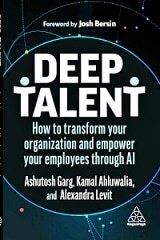
[Levit] Yes, and even a basic level of technical sophistication must not be taken for granted. With any AI implementation, a robust change management strategy is prudent. After all, AI tools are still relatively new to the 2023 workplace, whereas many of the old methods have been used for more than a century.
For a new implementation to work, employees need to actually have access to and use the tool, and this requires them to change their habits. This won’t happen on its own, however. Your formalized change management strategy might include a town hall presentation discussing the rationale for the new technology, an intranet dedicated to commonly asked questions, bespoke user training, and written pieces highlighting success stories.
I know a lot of people are playing around with ChatGPT right now. How can I – individually – use technologies like ChatGPT to learn and advance my career?
[Levit] Experiment! But please, please, please, don’t let ChatGPT – or any other AI bot – take over a part of your job without properly overseeing what it’s doing. Remember that these technologies do not yet possess human-level intelligence and cannot be expected to perform your job as well as you do. This may sound obvious, but I have public relations people using Chat GPT to pitch my Wall Street Journal column without first reading the emails composed by the bot. Spoiler alert: they don’t make any sense.
There appears to be a strong race for AI dominance in the business space. I’m seeing lots of articles basically saying that AI is the answer for everything. Should we look at those claims skeptically or fully embrace the future?
[Levit] Overall, I think this is a promising time to be a human worker. Technologies exist that free us from a lot of the mind-numbing, administrative work of the past and allow us more time to be strategic and creative. However, a degree of skepticism is important. Whenever you insert an AI tool into a traditionally human driven process, you still need a human involved to manage it, fix it when it breaks, figure out if it needs to be redeployed, and explain its role and data to decision-makers. There is no such thing (or shouldn’t be) as ‘set and forget’ with automation. If you go down this road, there are likely to be unpleasant legal and non-legal consequences.
Last question. With all the talk about AI right now, organizations that want to start exploring AI might be saying to themselves, “Where do I start?” What would you say to them?
[Levit] Well, AI can be used in a variety of ways, so for the purpose of this discussion, let’s focus on talent intelligence, or the role of AI in the talent sphere. A talent intelligence platform is definitely an investment that requires executive sponsorship. Like many investments, its costs are felt immediately, while its benefits lie in the future. Consequently, not everyone on a company’s leadership team may be immediately comfortable with embracing this technology – especially because it’s so new.
When asked to invest in any new technology, the natural question from would-be executive sponsors is: “What’s in this for us?” Thus, the natural first step is to clearly communicate the benefits of high-quality talent intelligence to your sponsors, which include:
Accelerates and scales hiringReduces recruiting and media spend costs (e.g., job boards, etc.)Improves the candidate experienceSupports quality of hire and diversity, equity, and inclusion goalsIncreases net promoter scores (NPS) for candidates and employeesIncreases internal hires and employee retentionConserves resources by using fewer point solutions (i.e., tool rationalization)A HUGE thanks to Alexandra for sharing her expertise with us. You can pick up a copy of “Deep Talent” on Amazon. I see this book being an essential resource for organizations as they consider AI technologies and look to implement them in the workforce. And be sure to subscribe to Alexandra’s blog, Water Cooler Wisdom.
Artificial Intelligence isn’t going away, in fact, I think we will continue to have more conversations about its capabilities. As Alexandra said, there are benefits to organizations and individuals in reducing administrative work. But organizations should put some dedicated thought and planning into the role that AI will play in their operation.
Image captured by Sharlyn Lauby while at the Wynwood Art District in Miami, FL
The post Artificial Intelligence Can Empower Your Employees appeared first on hr bartender.
April 6, 2023
Work is Not Like Family – HR Bartender
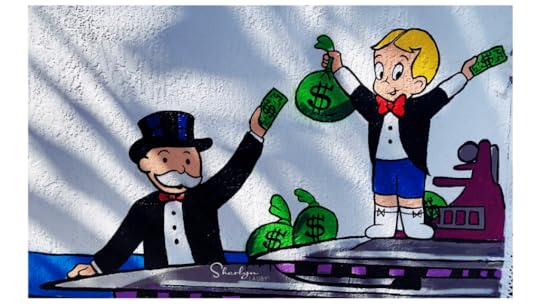
Estimated reading time: 3 minutes
I ran across an article recently on The Atlantic titled “The Dark Side of Saying Work is ‘Like a Family’”. It’s worth a read.
I totally understand why organizations want to say that the work environment is like family. They want to convey a picture that the work environment is like some nostalgic painting where everyone is smiling and happy. They’re trying to use the word family as a way to convey support and caring.
I don’t have to explain – but let me say it anyway – that not everyone views family the same way.
Organizations that want to have a family-like culture might want to think about what exactly “family” means. And let me add, look at what the company offers to make sure that the employee value proposition (EVP) algins with it. Here are some examples:
Support: Often when organizations say they’re “like family”, they mention support. And that’s great. Candidates and employees want to know that the organization will support them. Be prepared to share what support looks like – flexible work schedules? hybrid or remote work? Organizations should have policies that demonstrate they’re supportive of employee’s lives.
Interest: Many organizations will mention that they’re genuinely interested in the lives of their employees as part of the family environment. I could see this translating into new hire buddy programs, regular one-on-one meetings with managers, town hall meetings with senior leadership, and mentoring programs. It also means that the organization should have robust career development programs to demonstrate their interest in an employee’s future.
Celebrations and traditions: I believe that one of the reasons the organizations say that work is like family is because of special occasions. People get together and have a good time, even if there’s a little tension. If organizations are going to say that – then be prepared to back it up with team building and development. Have a formal employee recognition program that employees actually want.
My point is this – instead of saying that “work is like family” and hoping that the candidate or employee knows exactly what that means, organizations should say exactly what they mean. You can let people know that “the company culture is supportive. That we’re interested in you as a person and your career goals. We want to celebrate our professional successes together.” And don’t be afraid to show it with family-friendly benefits, flexible policies, and career development.
I do believe there might have been a time when candidates and employees wanted to work at companies where the employment brand portrayed “family”. I’m not sure that’s the case today. But that doesn’t mean that organizations have to change who they are. My guess is if they really looked at their definition of family, the company already has a great message to send.
Image captured by Sharlyn Lauby while at the Wynwood Art District in Miami, FL
The post Work is Not Like Family – HR Bartender appeared first on hr bartender.
April 4, 2023
One On One Meetings Increase Employee Engagement and Retention
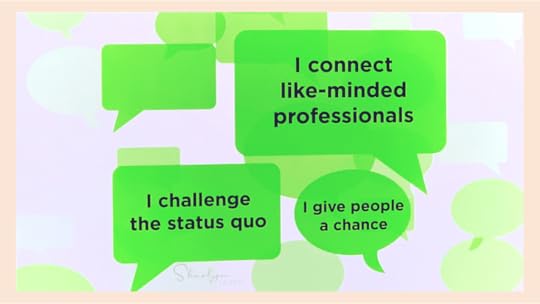
Estimated reading time: 2 minutes
One on one meetings between managers and employees have always existed. However, they are getting much more attention lately. I believe that’s because there’s a real focus on high performance and bottom-line results. Totally makes sense. Why not use regular communication to help strengthen performance?!
But, organizations need to remember that the one on one meeting only becomes successful when managers and employees have a good meeting. I know, this sounds very basic, but when we read about all the unproductive meetings that take place, it’s doesn’t make sense to assume that managers and employees know exactly what to do in a one on one meeting.
If organizations want managers and employees to have productive one on one meetings, they should offer some training and guidance on how to conduct them. And not just for managers. Employees are 50% of the meeting and they need training too!
Over the past couple of months, I’ve been working with our friends at The Workforce Institute at UKG to outline the elements of a successful one on one meeting. I hope you’ll take a moment to check these articles out. Bookmark and socialize them around the office.
One-on-one Meetings: A Manager’s Guide
One-on-one Meetings: An Employee’s Guide
These two articles share a blueprint on how to prepare for a one on one meeting. Feel free to use it as creative inspiration for a microlearning session. It can also be used to create a meeting agenda template. The goal is to get managers and employees to start scheduling, planning, and participating in productive meetings. Because when they do, everyone wins.
Organizations want high levels of performance. That means managers and employees need to have regular conversations. And they need to be good conversations. The result will be trusting relationships, higher productivity, employee engagement, and retention.
Image captured by Sharlyn Lauby while exploring the streets of New Orleans, LA
The post One On One Meetings Increase Employee Engagement and Retention appeared first on hr bartender.
April 2, 2023
The Benefits of Volunteerism

Estimated reading time: 3 minutes
Volunteerism is a great way for organizations and individuals to give back to the community. According to research from the U.S. Census Bureau and AmeriCorps, nearly 51% of the U.S. population age 16 and older, informally helped their community. The activities included things like running errands for a neighbor, watching someone’s child, or conducting a wellness check for an isolated senior.
I know the last couple of years have been tough on volunteerism because of the pandemic. But as we spend less time talking about the pandemic, I wanted to remind us of the organizational and individual benefits that volunteerism can bring.
Organizations have an opportunity to support their community. Obviously, organizations can make donations – or offer matching dollars when employees contribute – but they can also offer support in terms of sharing the expertise of their employees. Companies can provide paid time off for employees who volunteer. They can organize volunteer events where employees work on a project for a non-profit like cleaning up a park or cooking for people experiencing homelessness.
I’ve worked for organizations that encouraged me to become a board member. It was great exposure for the company, and it was a valuable learning experience for me. As a human resources professional, I gained experience working with budgets much larger than my own. I improved my verbal and written business communication skills, including how to manage conflicts.
Individuals who volunteer can learn new skills and make new professional relationships. Volunteerism could reduce boredom and burnout. If someone feels like they’re in a bit of a rut, maybe a volunteer assignment could help them refocus and recharge.
BUT and this is a big caveat, the volunteer role needs to be the right one. Volunteer opportunities can be as toxic as your job. So, do your homework. Here are four things to consider:
Think about what you want to do as a volunteer. Some people say they want to do things related to their current work. Like if I’m a graphic designer, I’ll do graphic design work. But others will intentionally look for something different. I once volunteered with someone who wanted to work in fundraising because they knew absolutely nothing about it and also wanted to gain selling experience. Research the organization. There are lots of wonderful organizations that need volunteers. Find the one that works for you. Maybe there’s an organization that has helped you or people close to you – and you want to give back. Or maybe there’s an organization nearby that you love their mission. Take time to find the organization that you’ll be proud to support. Ask questions about volunteer expectations! Organizations should be able to tell you what they need from a volunteer – upfront. Some organizations need volunteers on certain days / hours. You’ll want to know that in advance. Also find out if there’s an expectation that you’ll also donate. I once started volunteering for an organization that waited until after I became a volunteer to tell me that they expected a financial contribution. Think about your exit strategy. This might sound weird but think about the conditions that might cause you to stop volunteering. Organizations change and individuals change. We might begin volunteering and at some point, realize we can’t anymore. But we still want to support the organization. So just think about what you might be willing to do if you must step away whether it’s for a short period or permanently.If you’re looking for a new way to learn and contribute, volunteerism is a valuable experience both personally and professionally. But finding the right volunteer opportunity can take some time. That initial investment in research can offer huge benefits and lifetime rewards.
Image captured by Sharlyn Lauby while exploring the streets of Tampa, FL
The post The Benefits of Volunteerism appeared first on hr bartender.
March 30, 2023
Organizational Trust is Hard to Build and Easy to Break – Ask HR Bartender

Estimated reading time: 6 minutes
Today’s reader note is a long one, but it’s one we can empathize with. The story touches on subjects we regularly deal with at work: trust, management, and communication.
Hi, I’ve been a longtime reader of your blog posts since 2013. I remember discovering your blog researching employee engagement strategies to understand what could help boost openness for collaboration in my department. From your blog and many book recommendations, I’ve grown professionally and spiritually, but I still need to learn much more. That is why I am compelled to write to get an opinion on a matter I am conflicted on.
A bit of background: in my current employment, we’re an organization with less than 500 employees. A while ago, I was tasked with a new challenge outside my usual work. In this assignment, I’ve been working to help solve technical and ‘personality’ issues that have inhibited teams from working to their full potential. I’ve been working alongside supervisors across various functions in hopes of building more self-managed teams. Through the enormous emotional labor that has been put into building up teams, we’ve had a notable breakthrough, where employees in one corner of the organization have started to establish norms, work out conflicts on their own, and become more resilient and agile during times of change.
Our organization’s director started to meet 1:1 with all employees as a response to the disengagement and high turnover. I was told the director wanted to “get to know” employees in these short meetings. At first, I felt this was an okay idea, but some parts of my mind felt nervous. What tone does this send, what are the unintended consequences here, and what is the context? So many questions.
Fast forward a few months to the tail-end of all those meetings. I have found out that at the end of each one of these 1:1s, the director tells the employee to pick one activity from a list. The activities are like ‘learn how to make bread’ and ‘learn how to juggle’, etc.. The employees are told there will be an unspecified future check-in to see how they’re doing with the task.
Employees have told me that they are pouring out ideas and feedback in these meetings and that the dialog was great up until the end. I feel guilty because I encouraged employees to go into these meetings and talk honestly and openly, but they ended up feeling unheard and defeated.
I can’t pinpoint what bothers me the most: 1) employees are placed in a position where they can’t say ‘no’ to the request, 2) the employee’s supervisors haven’t raised an issue about it, and/or 3) if they did, the director still went on with this. I don’t want to push this as an issue, but I feel it sets us back somehow. I would feel differently if the director had brought in a professional to teach us how to juggle as a team-building activity, but this is different. Am I overreacting? Thanks.
I want to thank this person for being a regular HR Bartender reader and sharing their story. I wish I had a definitive answer to the question, “Am I overreacting?” but I don’t. There are things we don’t know.
For example, I assume from this note that the organizational culture isn’t one where doing stuff like juggling is the norm. But I don’t know if that’s a fair assumption. Maybe the director is trying to create some culture change. But that raises the question of whether the director has explained why they’re asking employees to pick an activity to work on? Lastly, I understand that the employee’s supervisors haven’t raised an issue but have employee’s expressed concerns? A supervisor might be reluctant to speak on behalf of the team if they haven’t heard from them.
It appears that one thing we do know is that the director’s 1:1 meetings threw up some red flags with employees. And those employees confided their concerns to this reader (let’s call them the HR pro). Now that the employees have done this, is the level of expectation that the HR pro will take their concerns to the director? If it is, then the HR pro needs to think about their next steps.
As a human resources professional, it’s a great thing when employees trust you and are willing to share their unfiltered thoughts, feelings, and opinions. In my experience, employees often came to me with their concerns so I could:
1) Communicate their concerns to management in a way that might resonate better. I’ll admit it – and often employees will admit it too – HR can be a function that can present employee opinions in a “business-speak” that will make a difference. HR departments can be a “third party” and help facilitate solutions. But it takes trust. It doesn’t mean that HR needs to always agree with the employee’s point of view, but they do need to be able to effectively articulate what’s going on.
2) Reframe the scenario so the employee could see management’s point of view. Sometimes, employees will have a negative opinion about something that the company is doing because no one explained why the company is doing it. HR – if they know what’s happening and why – can be that department to help employees see the whole picture. This might also be another moment when #1 (above) comes into play. HR should let the organization know the importance of getting buy-in.
I don’t know if it’s possible for the HR pro to chat with the director about what the employees have confided in them. Maybe the director can let everyone know why they asked employees to select a fun activity at a department meeting. It could be totally well intentioned like “I thought it would help with managing stress.” Or “I thought it would bring us together as a team.” Again, we don’t know why the director is doing this. But it could be possible that, if the director shares their plan, employees won’t find it to be demotivating and might even look forward to it.
But it really comes down to the decision that the HR pro makes. Are they going to encourage employees to express their feedback? Will they try to talk with the director? I do believe if the employees discover that HR didn’t do anything with their feedback it could hurt the trust they’ve spent a lot of time building. And if the director finds out HR knew the employees weren’t happy about the 1:1 meetings, it could hurt their working relationship.
Managing trust is hard. Sometimes when we’re unsure about what to do, we need to ask. “I’m glad you shared that information with me. Would you like for me to share it with INSERT NAME HERE?” And I don’t want to get us off track, but sometimes even when employees say, “I don’t want to formally complain, but INSERT COMPLAINT HERE.” HR pros have to speak up and let employees know they are obligated to investigate. That’s all part of building and maintaining trust.
Image captured by Sharlyn Lauby while exploring the streets of Miami, FL
The post Organizational Trust is Hard to Build and Easy to Break – Ask HR Bartender appeared first on hr bartender.
March 28, 2023
It Is Time to Schedule a Minimum Wage Audit – 3 Important Steps
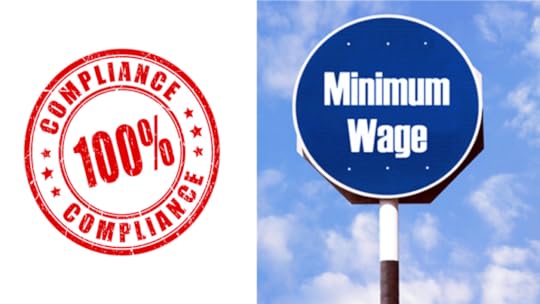
Estimated reading time: 5 minutes
(Editor’s Note: Today’s article is brought to you by our friends at Poster Guard® Compliance Protection , a division of HRdirect and the leading labor law poster service that gets your business up to date with all required federal, state, and local labor law postings, and then keeps it that way — for an entire year. Enjoy the article!)
In the United States, the federal minimum wage is $7.25/hour. It’s been that since July 2009. However, there have recently been a TON of changes to the minimum wage on a state and local level. As of today’s article, 30 states have a minimum wage higher than federal law. And, cities and counties in over 80 localities have adopted minimum wages above their state’s minimum wage.
More changes are coming. Starting in January 2023, 27 states plus the District of Columbia enacted new wage changes. In the near future, changes will take place in Connecticut, Nevada, Oregon, and Florida. In addition, 40 cities/counties have increased their wages (BTW: 28 of those locations were in California). Oh, and certain federal contractors are now required to pay $16.20/hour.
Bottom-line: There are a lot of changes going on.
This is really important to understand because if there’s a difference in minimum wage laws, employers are required to pay the most generous rate to non-exempt workers. Here’s a quick quiz: if I’m a non-exempt employee working in Denver, Colorado. How much should I get paid per hour?
Federal minimum wage $7.25/hourColorado minimum wage $13.65/hourDenver minimum wage $17.29/hourYes, the correct answer is $17.29/hour. And don’t forget that applies to overtime pay as well.
I’d like to believe that employers know when they’re paying more than federal minimum wage. But with all the changes going on, employers need to ask themselves if they have a process in place to make sure they stay current with all these wage changes. Especially if the organization has employees who work remotely.
Keep in mind, if the employee relocates, their rate of pay might change. Using our non-exempt employee in Colorado example, let’s say the employee has been living in Telluride and relocates to Denver. Employers might be certain they’re paying someone more than $7.25/hour. But if the employee is making $15/hour, did the organization know they should be making $17.29/hour?
That’s why it might be valuable to do a minimum wage audit. And I want to clarify here, that we’re only focused on minimum wage. Organizations might be doing compensation related audits for other reasons like verifying exempt / non-exempt status or evaluating pay equity. Those are also valuable reasons to audit compensation and they might factor into this conversation. But let’s focus on minimum wage for now.
How to Conduct a Minimum Wage AuditTo conduct your wage audit, here are a few steps to consider:
Find a reliable source for information. Our friends at Poster Guard have developed a Minimum Wage MonitorTM Premium Service. This online tool provides employers with a color-coded map that displays minimum wage data. It also shows past and future wage rates. This could be very helpful for future planning and budgeting purposes. The tool also provides email notifications when minimum wage laws are passed or changed so employers can start preparing for the new rates to take effect.
Start looking at employee wages in relation to the law and your internal practices. Once you have a good information source, organizations can start conducting their wage analysis. This isn’t just an exercise in “are we or aren’t we” paying more than minimum wage. Employees will know what the minimum wage is…they do not have to talk to someone in the breakroom to figure out if they’re not being paid fairly (given a minimum wage increase). Oh, and I don’t want to get off-track, but if you’re state/location requires pay transparency in recruitment marketing, then you’ll want to make sure you are disclosing the correct pay rate.
Determine if there are “pay gaps” that need to be addressed. Keep in mind that you’re not simply evaluating new employee pay. Changes in minimum wage impact other things, like wage compression. Just as a reminder, wage compression happens when a new employee is paid nearly the same amount as another employee with longer tenure. An example would be if I hire a new room attendant starting at $15/hour. But a room attendant with 5 years of service is making $15.50/hour. The organization will need to find the budget, put together a wage adjustment schedule, and plan to speak with employees about getting their pay on track.

As I mentioned earlier, it’s possible that the results of this audit need to be considered with other pay related audits. Of course, if you have any questions along the way, don’t hesitate to consult with your legal counsel because my guess is what we’re seeing right now with wage changes isn’t going away anytime soon.
The last thing any company wants is to be considered “out of touch” because they don’t know what the current minimum wage is for employees. Beyond appearing to be clueless, companies can’t afford to risk the potential wage and hour or Fair Labor Standards Act (FLSA) lawsuits from their employees. Minimum wage laws are changing regularly. Dare I say frequently. Get good information so you can pay people properly.
P.S. One more thing. We spent our time today talking about minimum wage changes from the perspective of employee pay. Keep in mind that most – but not all – of these changes require new labor law posters. Don’t forget that Poster Guard’s Poster Compliance Service keeps you in compliance by providing automatic replacements (at no additional cost) every time a mandatory change occurs.
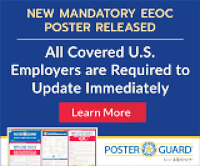
The post It Is Time to Schedule a Minimum Wage Audit – 3 Important Steps appeared first on hr bartender.
Sharlyn J. Lauby's Blog
- Sharlyn J. Lauby's profile
- 10 followers



